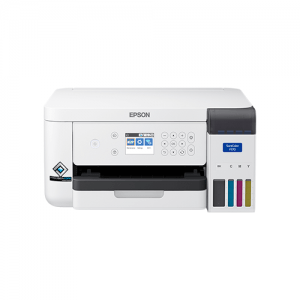
If the P9570/7570 lives up to its billing (only time will tell), it will be more reliable and less costly to operate than the competition.įinally, based upon our experience with our demo unit that we’ve had for a year, we have experienced no clogged nozzles. It’s also worth noting that in the Coke vs Pepsi world of piezo heads (Epson) vs thermal heads (Canon/HP), the user-replaceable printhead with the thermals is a consumable and increases the cost of operation. This is new, and along with the improved dust abatement technology, promises to address what has historically been one of the most serious limitation of Epson printers.

In the event that a nozzle does get clogged, Epson has now provided the end user the capability to access the printhead and remove the clog. As I understand it, they are able to check for clogged nozzles without using any ink (waveform technology) and then also clear the clog.Īdditionally, the paper cover closes to form a more complete seal to prevent dust in the air getting into the printer area.
RIP EPSON SURECOLOR F2000 PRINTER VERIFICATION
Most importantly, Epson has evolved their automated nozzle verification check technology. Epson has upped their game a number of ways with the P9570/7570.

This can be more of an issue with printers that are used intermittently. One of the legitimate complaints that users lodge against Epson printers relates to the issue of clogged nozzles. The Epson shows a bump in the Green, Red and Blue regions. On commonly used Glossy Photo and Fine Art Matte papers, the P7570 shows an improved color gamut of ~10%. (Full disclosure – Spectraflow is also a Canon dealer.) We did some gamut comparisons against leading competitive printers from Canon. Color Gamut Comparative Printer Testįrom an ink/color gamut perspective, the P9570/7570 combines the best of both worlds from the P9000/7000 SE and CE: it includes Violet ink for maximizing color gamut and LLK for providing the best highlight detail. Epson’s claims of the new printers being twice as fast were borne out. Overall, printer speed was improved 50% at res=1200 and a whopping 100% at res=600. The below graph summarizes the results from our internal testing. The good news with the P9570/7570 is both submit time and print time are improved, the latter considerably. Even though the newer resolutions are slightly lower, we were not able to distinguish any quality difference. The older P9000/7000 printers have a typical resolution of 1440×720 for quality or 720×720 for speed.

When you think of a printer’s speed, there are a few factors to take into consideration, such as the printer’s resolution, submit time (time between when you click the “print” button and when the head starts moving), and print time. That being said, Epson has discontinued the 44” P10000 in favor of the 44” P9570, though the 60” P20000 is still available. It’s also worth noting that Epson has kept the P9000/7000 Standard Edition (LLK, no Violet) and Commercial Edition (Violet, no LLK) in the line up for those who are not interested in paying several hundred dollars extra for the additional speed and other features found in the P9570/7570. Place Epson Printers In Your Line-Upīoth the P9570 and P7570 combine the speed of the 44” P10000 and 60” P20000 with the large color gamut of the P9000/P7000, along with a bunch of other features described below that make these Epson printers the most significant addition to the photographic lineup in about decade. We have been testing our demo unit here at Spectraflow and have been sharing our wide format printer reviews in conjunction with Epson via Webinar, which can be found here. In 2020, Epson introduced their latest additions to their family of large format photographic inkjet printers, the 44” SureColor P9570 and 24” P7570.


 0 kommentar(er)
0 kommentar(er)
